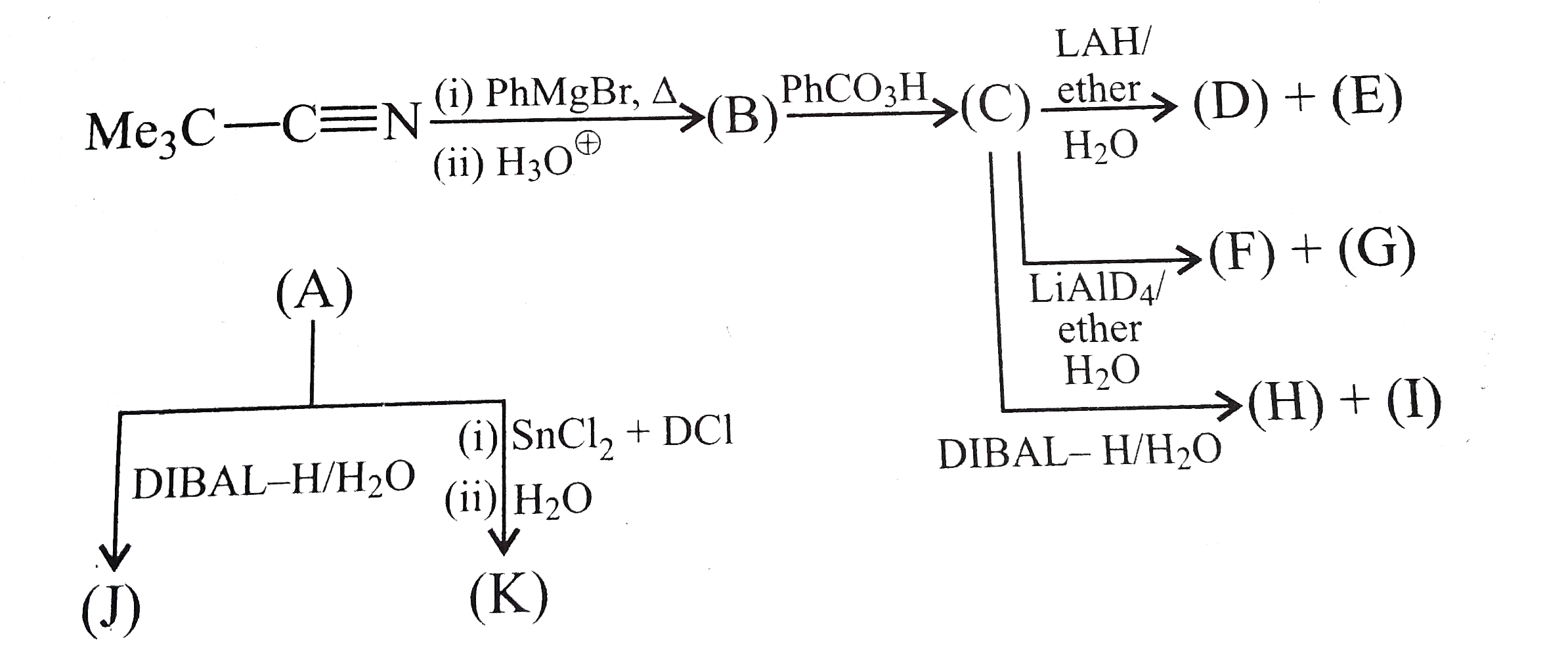In the figure of previous problem, D and E respectively represent
Absorption line of Balmer series and the ionisation potential of hydrogen
Absorption line of Balmer series and the wavelength lesser than lowest of the Lyman series
Spectral line of Balmer series and the maximum wavelegth of Lyman series
Spectral line of Lyman series and the absorption to greater wavelength of limiting value of Paschen series
The correct Answer is:A
To solve the problem regarding what D and E represent in the context of the hydrogen spectrum, we can follow these steps:
1. Identify the Context:
- The question refers to a previous problem that dealt with the spectral lines of hydrogen, specifically the transitions between energy levels.
2. Analyze Transition D:
- Transition D corresponds to an electron moving from a higher energy level (n=4) to a lower energy level (n=2).
- This transition falls within the Balmer series, which involves transitions to n=2 from higher levels (n=3, n=4, etc.).
- Therefore, we can conclude that D represents an absorption line corresponding to the Balmer series.
3. Analyze Transition E:
- Transition E corresponds to an electron moving from an infinite energy level (n=∞) to the ground state (n=1).
- This transition is significant because it represents the ionization potential of hydrogen, as it indicates the energy required to remove an electron from the atom completely.
- Additionally, this transition corresponds to the Lyman series, which involves transitions to n=1 from higher levels (n=2, n=3, etc.).
- Thus, E represents the ionization potential of hydrogen.
4. Summarize Findings:
- Based on the analysis, we can summarize:
- D represents an absorption line of the Balmer series.
- E represents the ionization potential of hydrogen.
Final Answer:
- D corresponds to an absorption line of the Balmer series.
- E corresponds to the ionization potential of hydrogen.
- The question refers to a previous problem that dealt with the spectral lines of hydrogen, specifically the transitions between energy levels.
- Transition D corresponds to an electron moving from a higher energy level (n=4) to a lower energy level (n=2).
- This transition falls within the Balmer series, which involves transitions to n=2 from higher levels (n=3, n=4, etc.).
- Therefore, we can conclude that D represents an absorption line corresponding to the Balmer series.
- Transition E corresponds to an electron moving from an infinite energy level (n=∞) to the ground state (n=1).
- This transition is significant because it represents the ionization potential of hydrogen, as it indicates the energy required to remove an electron from the atom completely.
- Additionally, this transition corresponds to the Lyman series, which involves transitions to n=1 from higher levels (n=2, n=3, etc.).
- Thus, E represents the ionization potential of hydrogen.
- Based on the analysis, we can summarize:
- D represents an absorption line of the Balmer series.
- E represents the ionization potential of hydrogen.
- D corresponds to an absorption line of the Balmer series.
- E corresponds to the ionization potential of hydrogen.
Topper's Solved these Questions
- ATOMIC PHYSICSBOOK - CENGAGE PHYSICS ENGLISHCHAPTER - ATOMIC PHYSICSEXERCISE - ddp.4.3
15 Videos
- ATOMIC PHYSICSBOOK - CENGAGE PHYSICS ENGLISHCHAPTER - ATOMIC PHYSICSEXERCISE - dpp-4.1
15 Videos
- ALTERNATING CURRENTBOOK - CENGAGE PHYSICS ENGLISHCHAPTER - ALTERNATING CURRENTEXERCISE - Single Correct
10 Videos
- CAPACITOR AND CAPACITANCEBOOK - CENGAGE PHYSICS ENGLISHCHAPTER - CAPACITOR AND CAPACITANCEEXERCISE - Integer
5 Videos
Similar Questions
Knowledge Check
The given diagram shows axon terminal and synapse. Here A,B,C,D and E respectively represent
 AAxon terminal, Synaptic cleft, Synaptic versicles, Neurotransmitters and ReceptorsBAxon terminal, Synaptic vesicles, Synaptic cleft, Receptors and NeurotransmittersCSynaptic cleft, Synaptic vesicles, Axon terminal, Neurotransmitters and ReceptorsDSynaptic cleft, Axon terminal, Synaptic vesicles, Neurotransmitters and Receptors
AAxon terminal, Synaptic cleft, Synaptic versicles, Neurotransmitters and ReceptorsBAxon terminal, Synaptic vesicles, Synaptic cleft, Receptors and NeurotransmittersCSynaptic cleft, Synaptic vesicles, Axon terminal, Neurotransmitters and ReceptorsDSynaptic cleft, Axon terminal, Synaptic vesicles, Neurotransmitters and Receptors
In the conditions of the previous problem find the kinetic, the potential and the total energy of the oscillator.
View SolutionIn the following figure the energy levels of hydroge atom have been shown along with some transitions marked A, B,C,D and E.The transitionsy A,B and C respectively represent:

View SolutionIn conditions of the previous problem find the frequency and the period of the variation of kinetic energy.
View SolutionIn the previous problem, the displacement of the particle from the mean position corresponding to the instant mentioned is
View SolutionIn the given figure BC is produced on both sides to points D and E respectively. Find the values of x and y

View SolutionSuppose the 19Ω resistor of the previous problem is disconnected. Find the current through P2Q2 in the two situations (a) and (b) of that problem.
View SolutionSuppose the 19Ω resistor of the previous problem is disconnected. Find the current through P2Q2 in the two situations (a) and (b) of that problem.
View Solution


